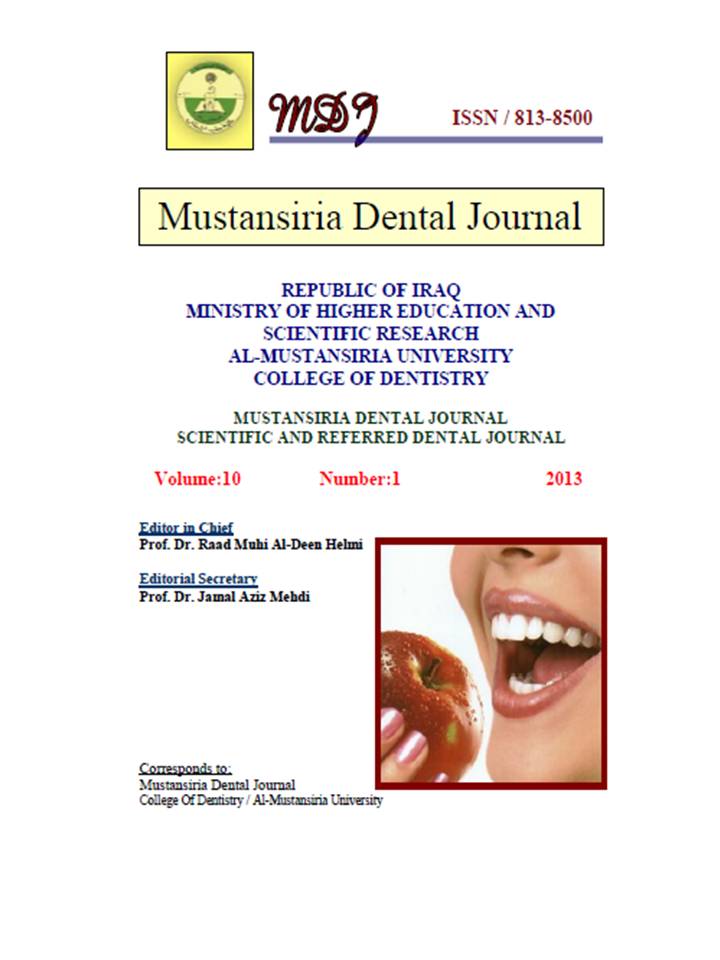Correlation of mandibular canal wall resorption with angular cortical thickness among edentulous patients using panoramic radiographs (A comparative study between male and female)
DOI:
https://doi.org/10.32828/mdj.v10i1.203Keywords:
Keywords: Mandibular canal , edentulous, hormonal imbalance, panoramic.Abstract
Background
Resorption of alveolar bone is the best recognized feature of mandibular aging in
the edentate subject. The aim of this is study to evaluate the mandibular canal wall
resorption using panoramic radiographs among edentulous male and female.
Material and method
The sample of this study was collected from patients who attended Teaching
Hospital of the College of Dentistry at Al- Mustansiria University and panoramic
radiographs were taken in Al-Karama specialized center for dentistry. Forty three
patients were selected in this study with age range between 59-85 years (25 males
and 18 females) . Panoramic radiographs for all patients and sides were examined
and evaluated .
Results
Chi-square between males and females of angular cortical thickness (ACT) ≥
1mm and ACT ˂ 1mm was (37.06) which statistically significant with p-value
(0.008) and between resorption (grades) and age of males was(34.72) which it
statistically significant p-value(0.049) also between resorption (grades) and age of
females was(15.6) which was statistically significant p-value (0.003) . Sperman
correlation showed statistically significant moderate correlation between gender and
age (r=0.581,p-value=0.01) and there was a moderately statistical significant
correlation between the grades of mandibular canal resorption and the angular
cortical thickness measurements in both gender (r=0.532,p-value=0.033).
Conclusion
The resorption of the wall is found more often in edentulous females than in the
males due to hormonal imbalance.

Downloads
Published
Issue
Section
License
The Journal of Mustansiria Dental Journal is an open-access journal that all contents are free of charge. Articles of this journal are licensed under the terms of the Creative Commons Attribution International Public License CC-BY 4.0 (https://creativecommons.org/licenses/by/4.0/legalcode) that licensees are unrestrictly allowed to search, download, share, distribute, print, or link to the full texts of the articles, crawl them for indexing and reproduce any medium of the articles provided that they give the author(s) proper credits (citation). The journal allows the author(s) to retain the copyright of their published article.
Creative Commons-Attribution (BY)








